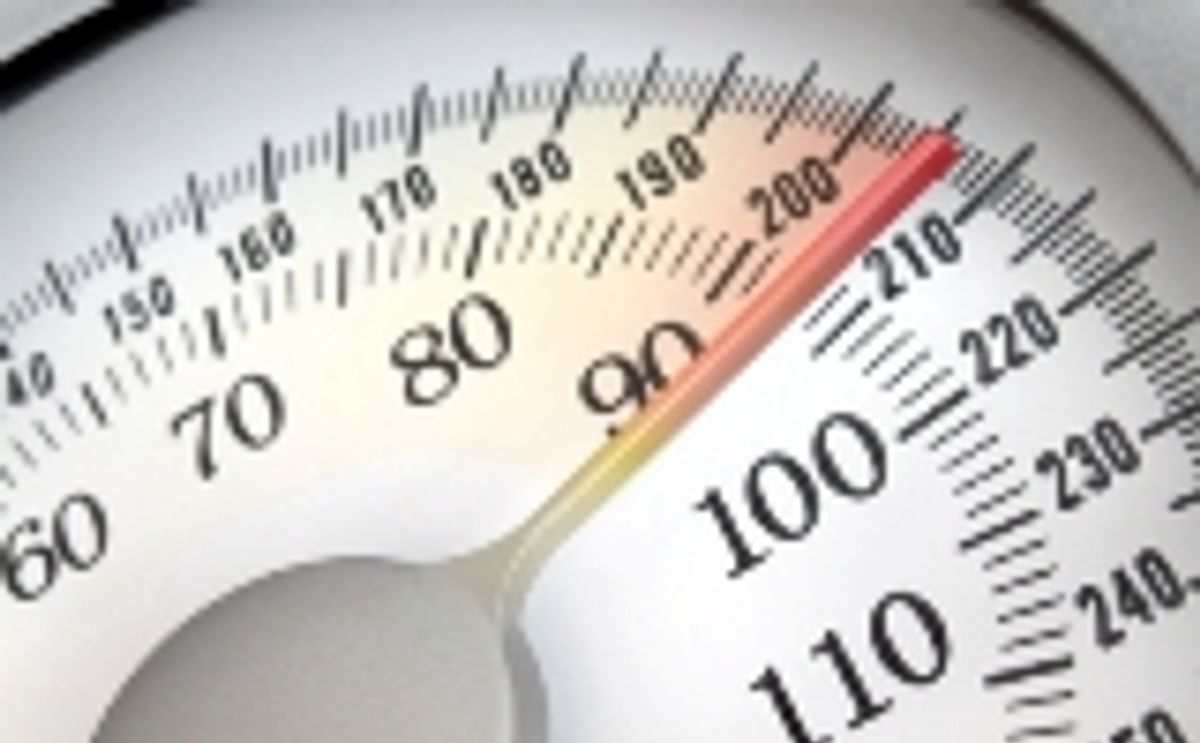New research that uses an innovative approach to study, for the first time, the relative contributions of food and exercise habits to the development of the obesity epidemic has concluded that the rise in obesity in the United States since the 1970s was virtually all due to increased energy intake.
How much of the obesity epidemic has been caused by excess calorie intake and how much by reductions in physical activity has been long debated and while experts agree that making it easier for people to eat less and exercise more are both important for combating it, they debate where the public health focus should be.
A study presented on Friday at the European Congress on Obesity is the first to examine the question of the proportional contributions to the obesity epidemic by combining metabolic relationships, the laws of thermodynamics, epidemiological data and agricultural data.
"There have been a lot of assumptions that both reduced physical activity and increased energy intake have been major drivers of the obesity epidemic. Until now, nobody has proposed how to quantify their relative contributions to the rise in obesity since the 1970s. This study demonstrates that the weight gain in the American population seems to be virtually all explained by eating more calories. It appears that changes in physical activity played a minimal role,"said the study's leader, Professor Boyd Swinburn, chair of population health and director of the World Health Organization Collaborating Centre for Obesity Prevention at Deakin University in Australia.
The scientists started by testing 1,399 adults and 963 children to determine how many calories their bodies burn in total under free-living conditions. The test is the most accurate measure of total calorie burning in real-life situations.
Once they had determined each person's calorie burning rate, Swinburn and his colleagues were able to calculate how much adults needed to eat in order to maintain a stable weight and how much children needed to eat in order to maintain a normal growth curve.
They then worked out how much Americans were actually eating, using national food supply data (the amount of food produced and imported, minus the amount exported, thrown away and used for animals or other non-human uses) from the 1970s and the early 2000s.
The researchers used their findings to predict how much weight they would expect Americans to have gained over the 30-year period studied if food intake were the only influence. They used data from a nationally representative survey (NHANES) that recorded the weight of Americans in the 1970s and early 2000s to determine the actual weight gain over that period.
"If the actual weight increase was the same as what we predicted, that meant that food intake was virtually entirely responsible. If it wasn't, that meant changes in physical activity also played a role,"Swinburn said. "If the actual weight gain was higher than predicted, that would suggest that a decrease in physical activity played a role."
The researchers found that in children, the predicted and actual weight increase matched exactly, indicating that the increases in energy intake alone over the 30 years studied could explain the weight increase.
"For adults, we predicted that they would be 10.8 kg heavier, but in fact they were 8.6 kg heavier. That suggests that excess food intake still explains the weight gain, but that there may have been increases in physical activity over the 30 years that have blunted what would otherwise have been a higher weight gain,"Swinburn said.
"To return to the average weights of the 1970s, we would need to reverse the increased food intake of about 350 calories a day for children (about one can of fizzy drink and a small portion of French fries) and 500 calories a day for adults (about one large hamburger),"Swinburn said. "Alternatively, we could achieve similar results by increasing physical activity by about 150 minutes a day of extra walking for children and 110 minutes for adults, but realistically, although a combination of both is needed, the focus would have to be on reducing calorie intake."
He emphasized that physical activity should not be ignored as a contributor to reducing obesity and should continue to be promoted because of its many other benefits, but that expectations regarding what can be achieved with exercise need to be lowered and public health policy shifted more toward encouraging people to eat less.
Increased food intake alone explains the increase in body weight in the United States

Like to receive news like this by email? Join and Subscribe!
Get the latest potato industry news straight to your WhatsApp. Join the PotatoPro WhatsApp Community!
Sponsored Content
Sponsored Content
Sponsored Content
Sponsored Content









